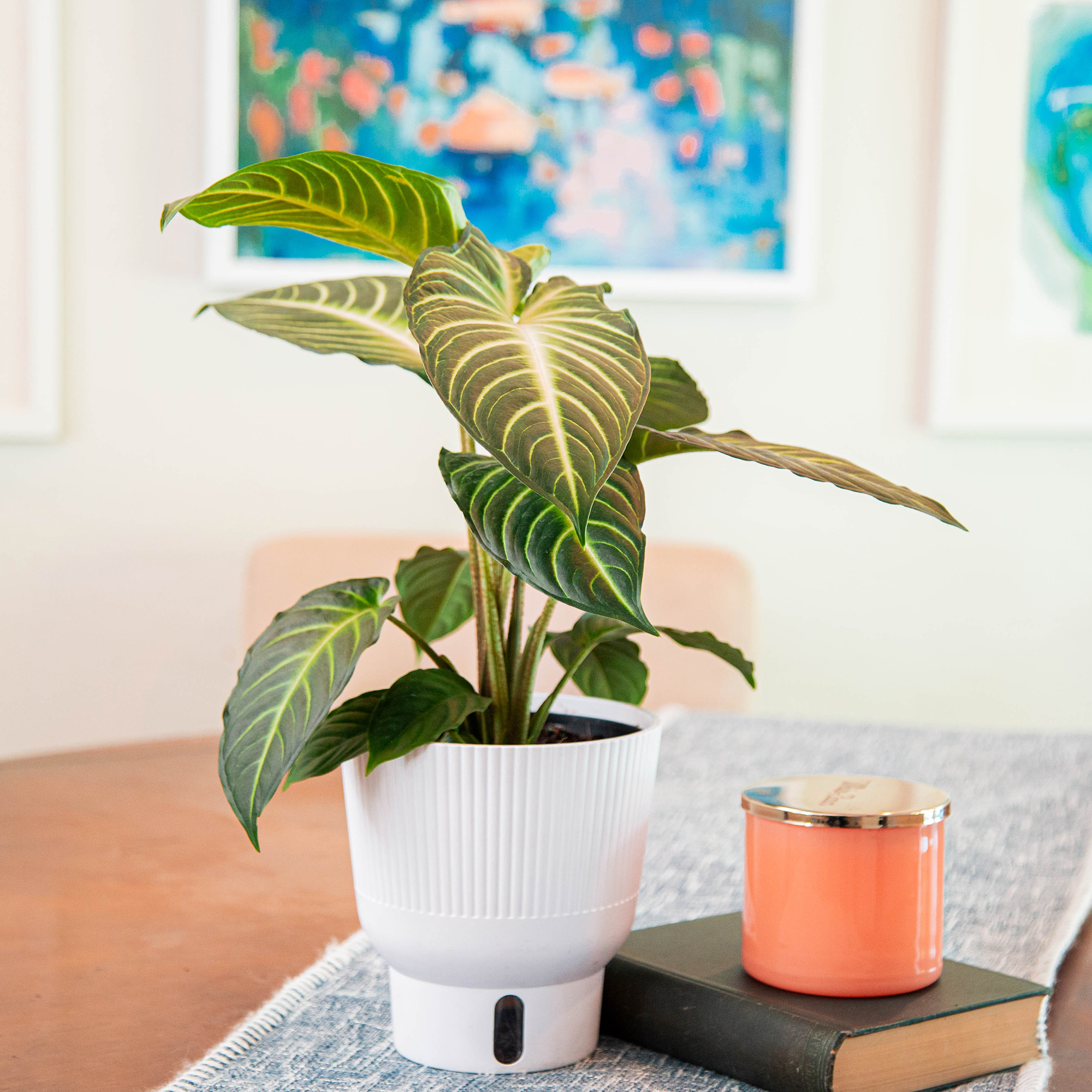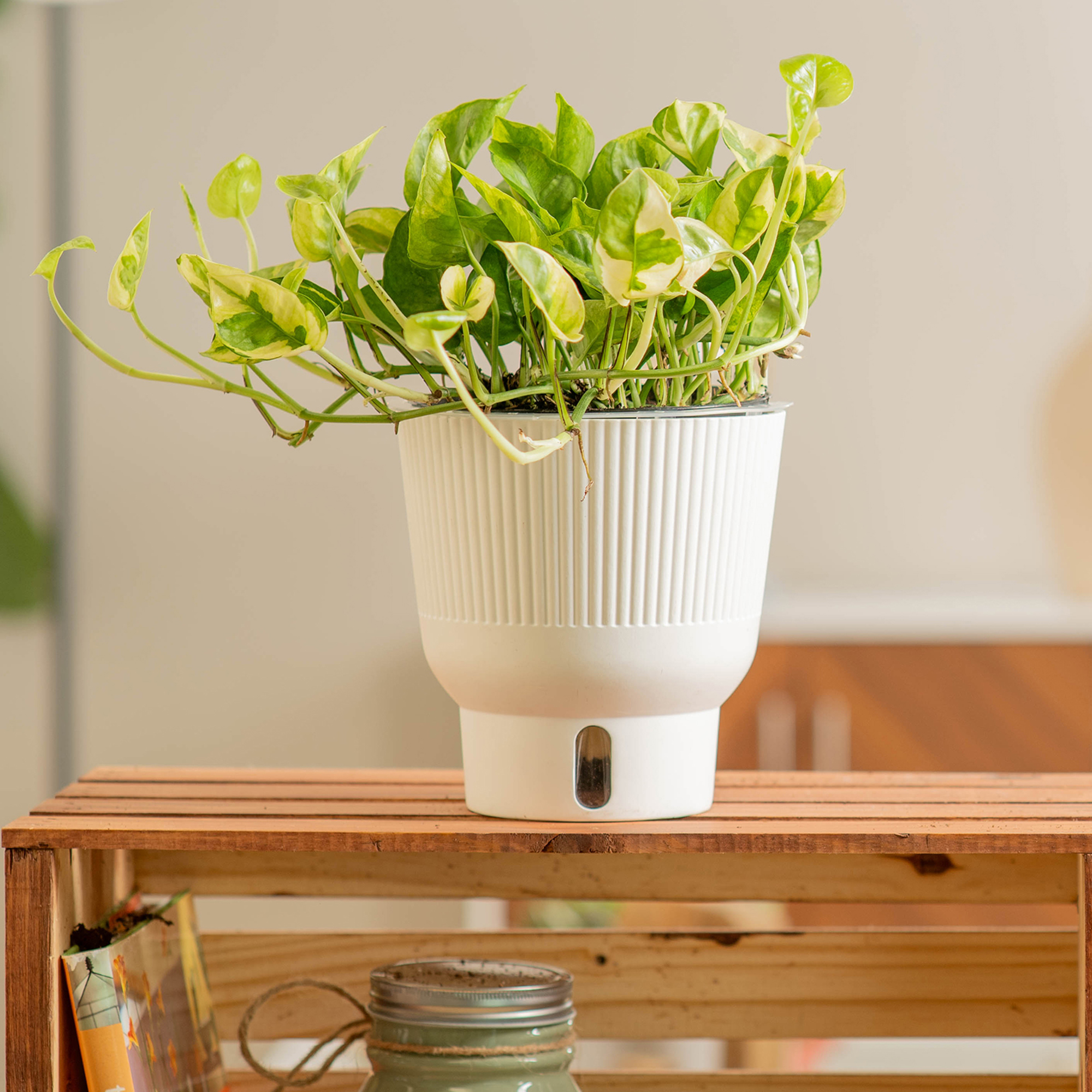Perfect Houseplant Combinations For Every Room In Your Home
Choose the best mix of houseplants to decorate every room, from low-light living areas and calming bedrooms to bright, humid kitchens.

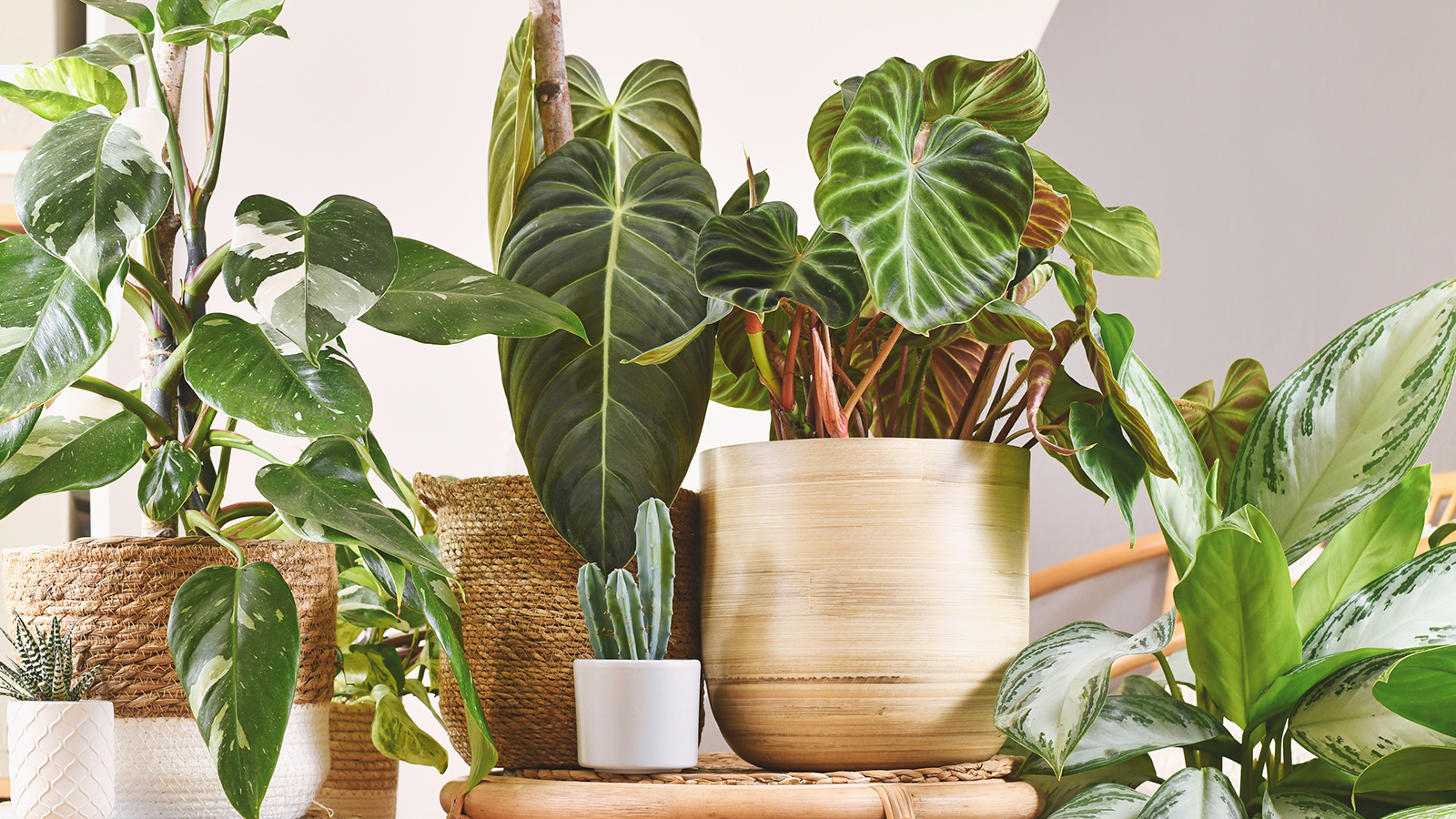
A home feels homier when we bring a bit of the natural world indoors. Plants are an easy way to transform a room from a simple box into a welcoming space. Whether standing tall or cascading downward, plants’ structure softens the edges of our rooms and furnishings, creating texture and adding life to the surroundings we hold most dear.
Houseplants don’t just give, though; they also take away. A NASA study of green foliage plants found that some plants help to remove certain volatile organic compounds from indoor environments. This is in addition to their natural ability to remove carbon dioxide from the air and release oxygen. These air-cleaning attributes are a wonder enough to make us reconsider a plant’s mantle of leaves as its superhero cape.
Good houseplant care is vital if plants are to look and perform their best. Be sure the rooms in which they’ll stay will meet their needs – for instance, a high-light room is ideal for plants requiring lots of light. While it’s tempting to choose a plant on its looks alone and then place it in a room, it’s best to consider the room before choosing your houseplant in order for that plant to thrive.
We’ve gathered a variety of plants that do well under the typical conditions of common rooms in a home. Choose two or three to combine in each room for calming spaces that feel connected to nature.
The Kitchen
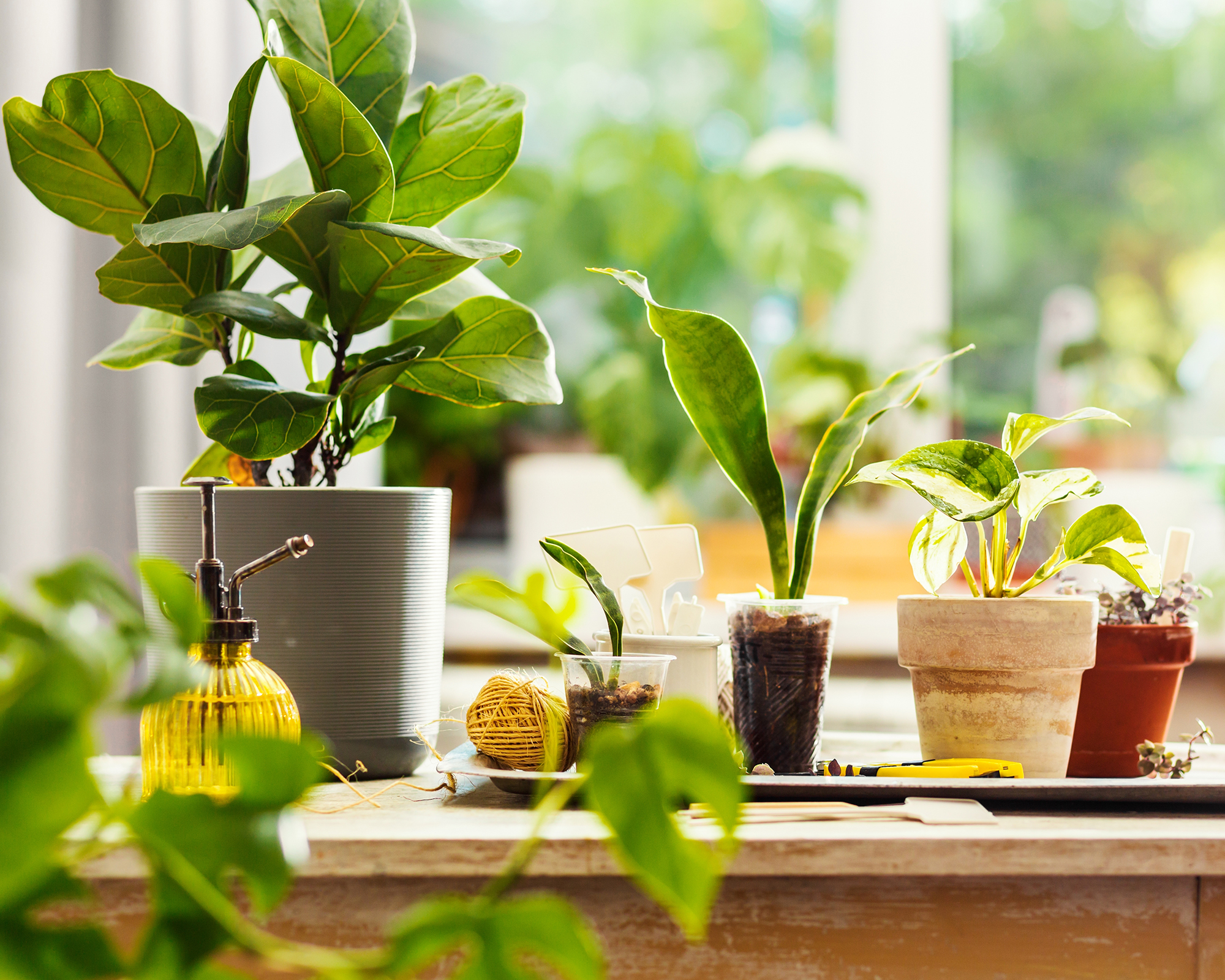
Kitchens are often bright rooms, whether thanks to large, sun-filled windows, ample counter and overhead lighting, or both. It’s also the unofficial gathering spot of the whole house. From morning coffee to afterschool shenanigans, and of course the bustle of cooking and dining, the kitchen is the hub of the home.
Houseplants for kitchens should love the light, and they should also be resilient around all that activity. These plants that fit the bill work beautifully when arranged together.
The dragon tree (Dracaena marginata) is a tall, slender tree that does well in bright, indirect light, so place it in a corner right off a large window. Its palm-like trunk is topped with flexible, red-edged green cascading leaves, so brushing by it won’t be a bother.
Sign up for the Gardening Know How newsletter today and receive a free copy of our e-book "How to Grow Delicious Tomatoes".
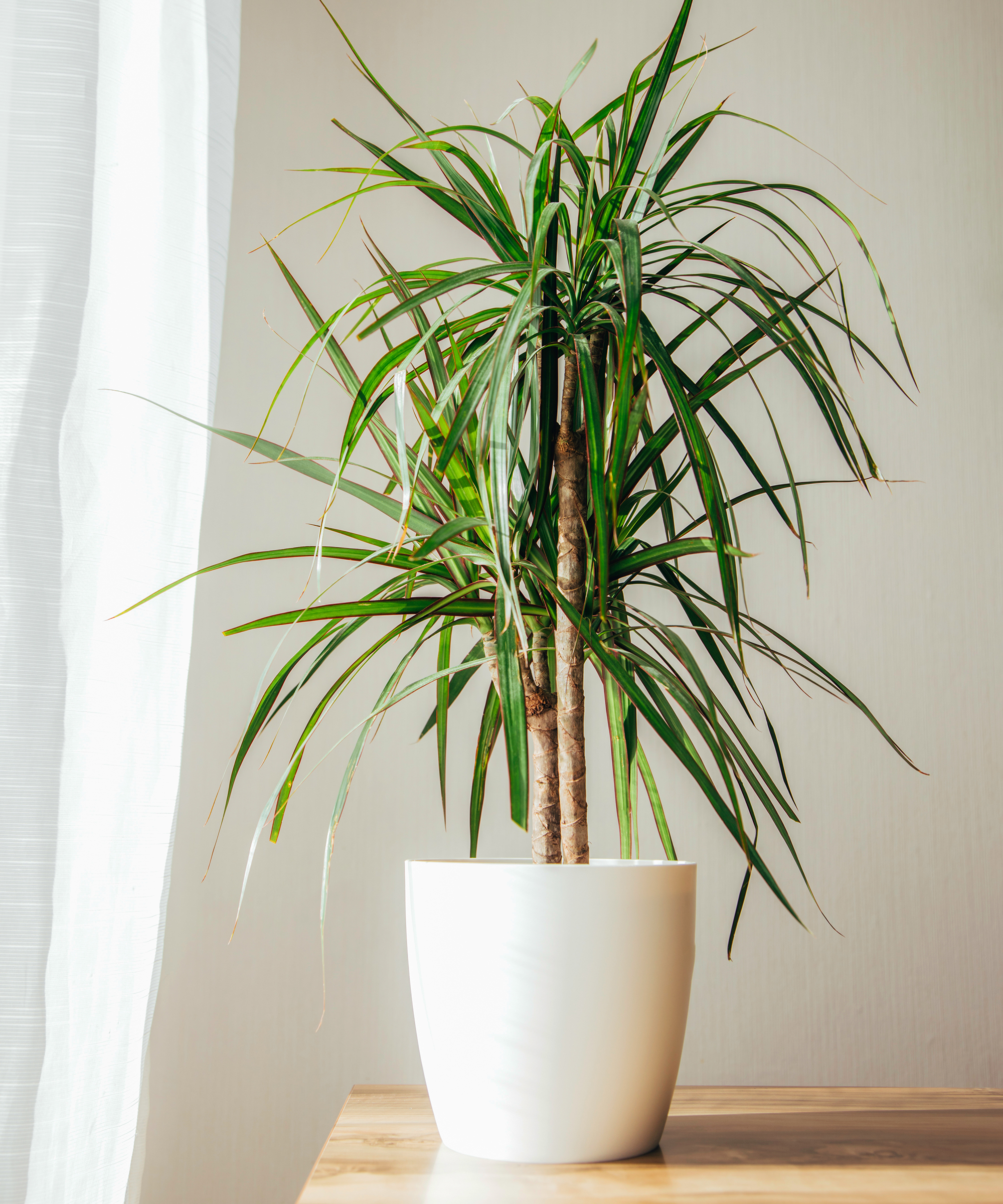
Fiddle leaf fig (Ficus lyrata) is another tall and slender tree that grows best in bright, indirect light. Its paddle-shaped glossy green leaves are ribbed and add an interesting textural element. The warmth of an active kitchen is ideal for this plant.
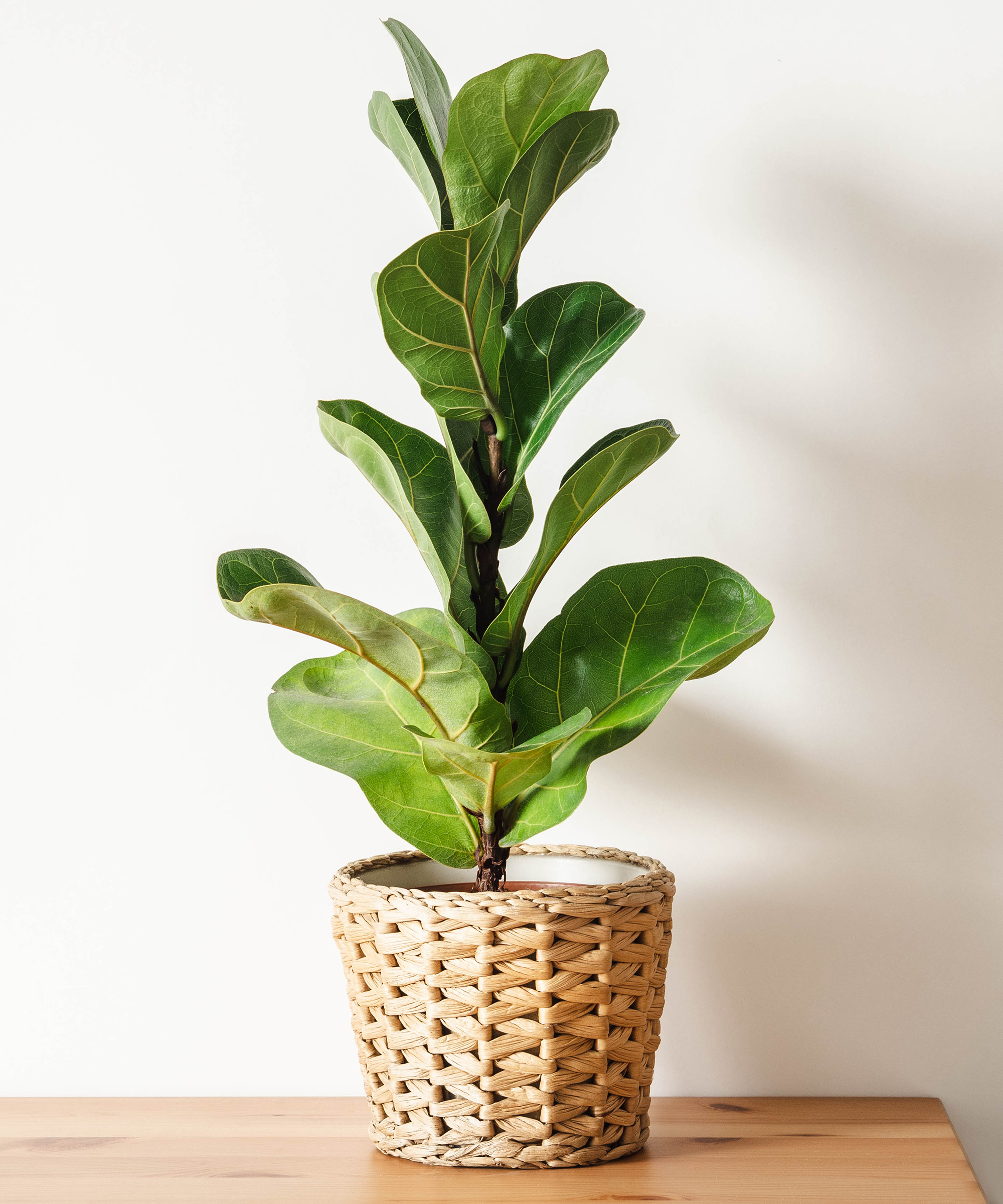
Xanthosoma – widely known as elephant ear – has stunning large fan-like leaves leaves. The perfect plant for injecting a leafy, tropical air into the kitchen, elephant ear thrives in bright light, warm temperatures and high humidity.
Put some plants to work in the kitchen, too. For example, keep an aloe (Aloe vera) handy on a sunny counter. There are many uses for aloe vera plants: the leaves of this succulent contain a gel that has antibacterial, antiviral, and antiseptic properties. If cooking has caused a small burn on your skin, snap off a portion of a leaf and rub its juice on the burn to start the healing quickly.
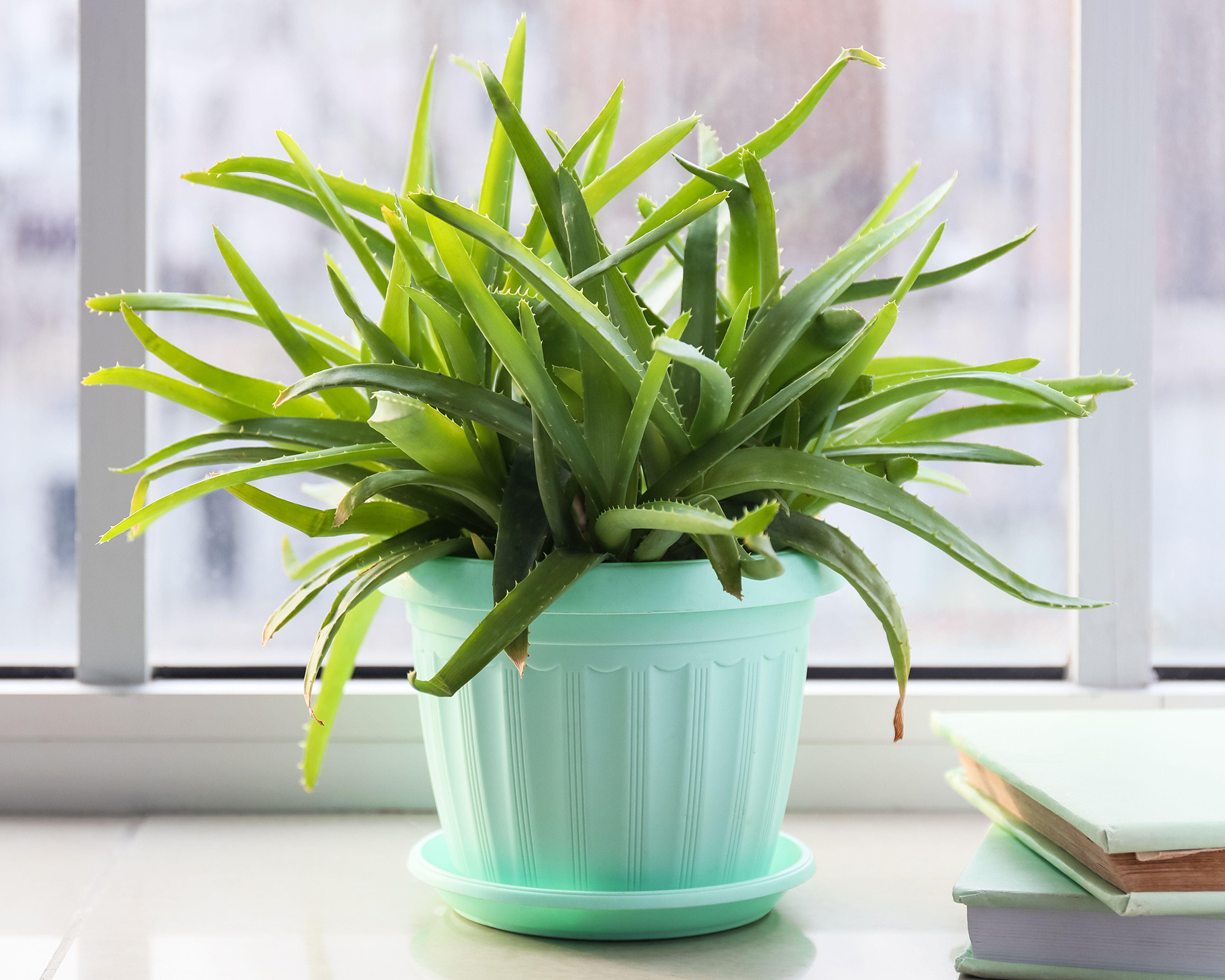
Also, consider placing small pots of your most-used herbs near your kitchen window for easy access. Plant a countertop herb garden with favorites such as parsley, basil, thyme, and oregano to add fresh snippings to salads, stews, and hearty meals.
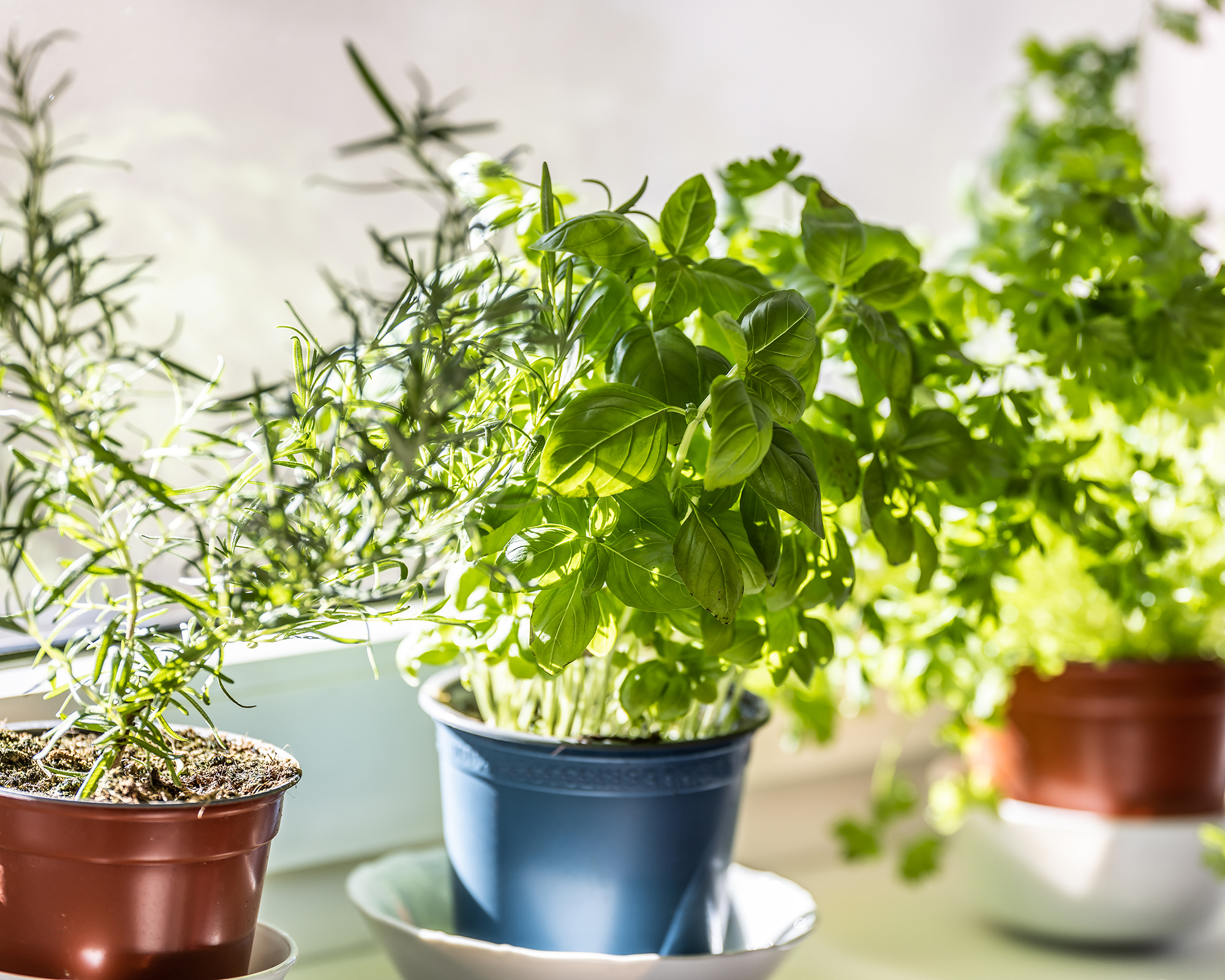
The Bathroom
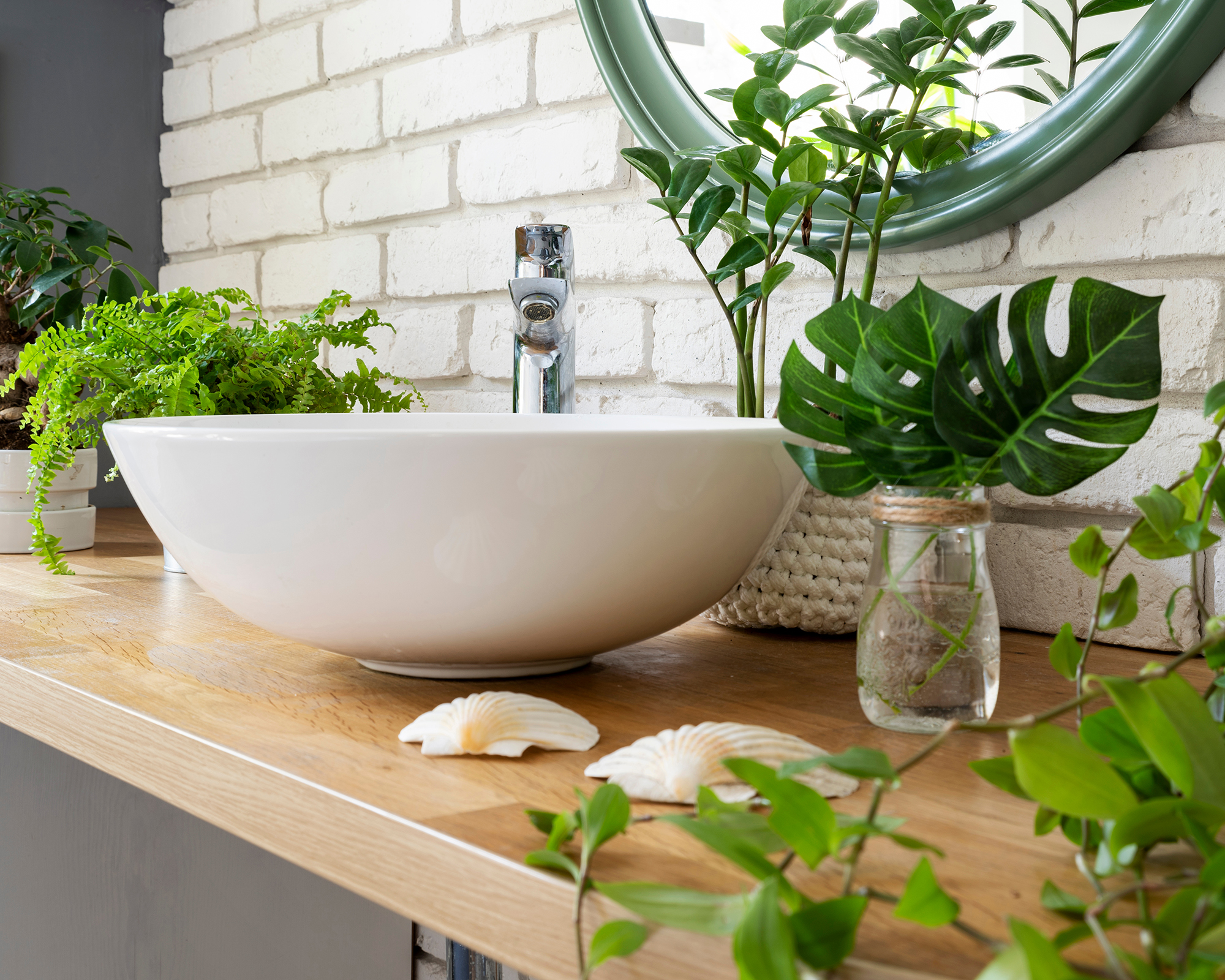
Bathrooms come in all shades and sizes, from small, windowless rooms to extravagant light-filled spas. The one thing they all have in common is higher-than-average humidity.
Many houseplants hail from tropical regions and so are well-suited to handle moist air. In fact, some thrive on it. Combine these plants for bathrooms to awaken your senses.
The African violet (Saintpaulia ionantha), for example, is from the tropical rainforests of East Africa. The humid bathroom will encourage frequent and healthy flowering. Place the African violet in moderate to bright indirect light for best growth.
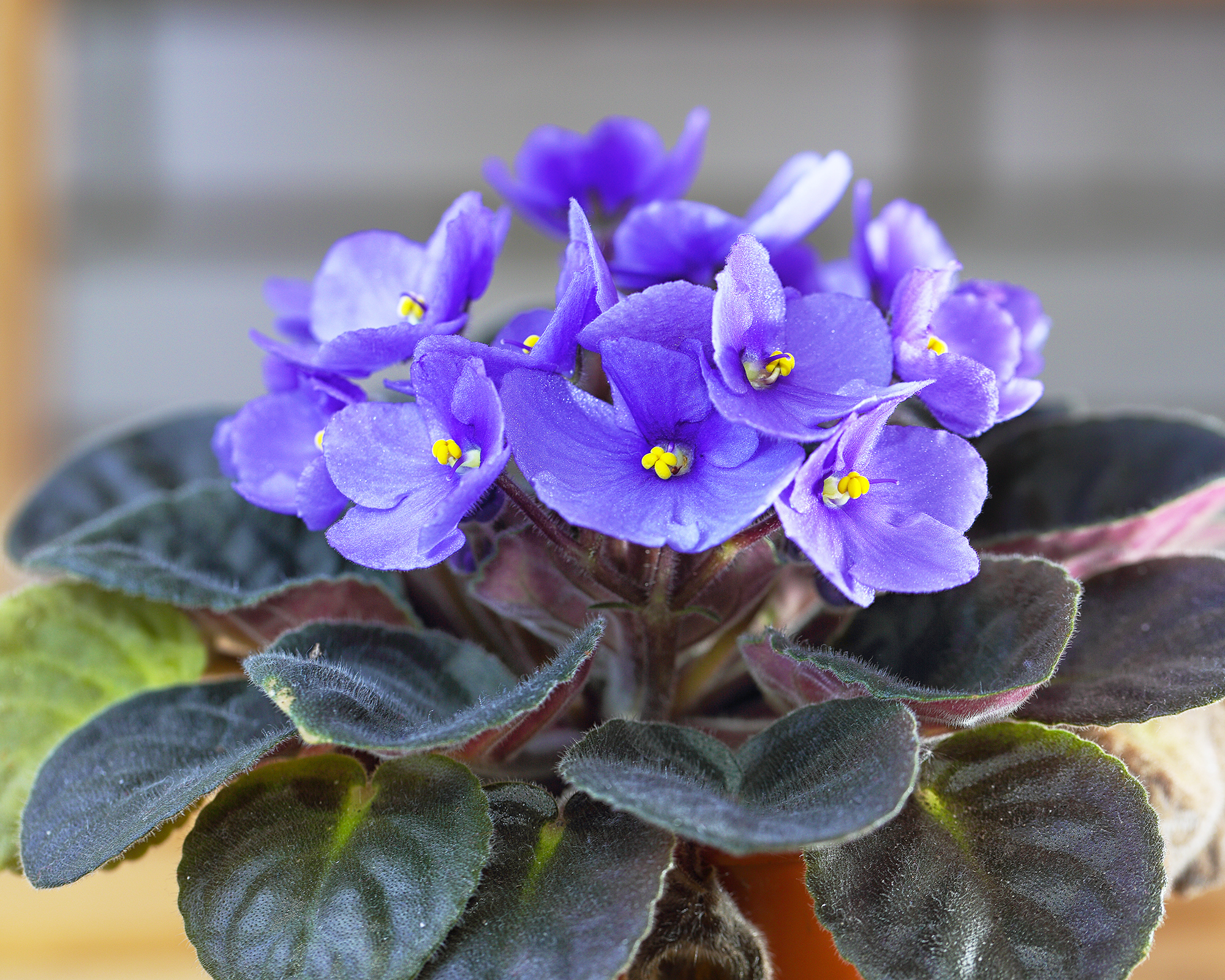
Orchids (Orchidaceae) are another familiar rainforest-loving tropical plant. These thrive in high humidity with bright, indirect light. Their cascading stems of colorful, moth-shaped flowers look right at home on a shelf or tabletop.
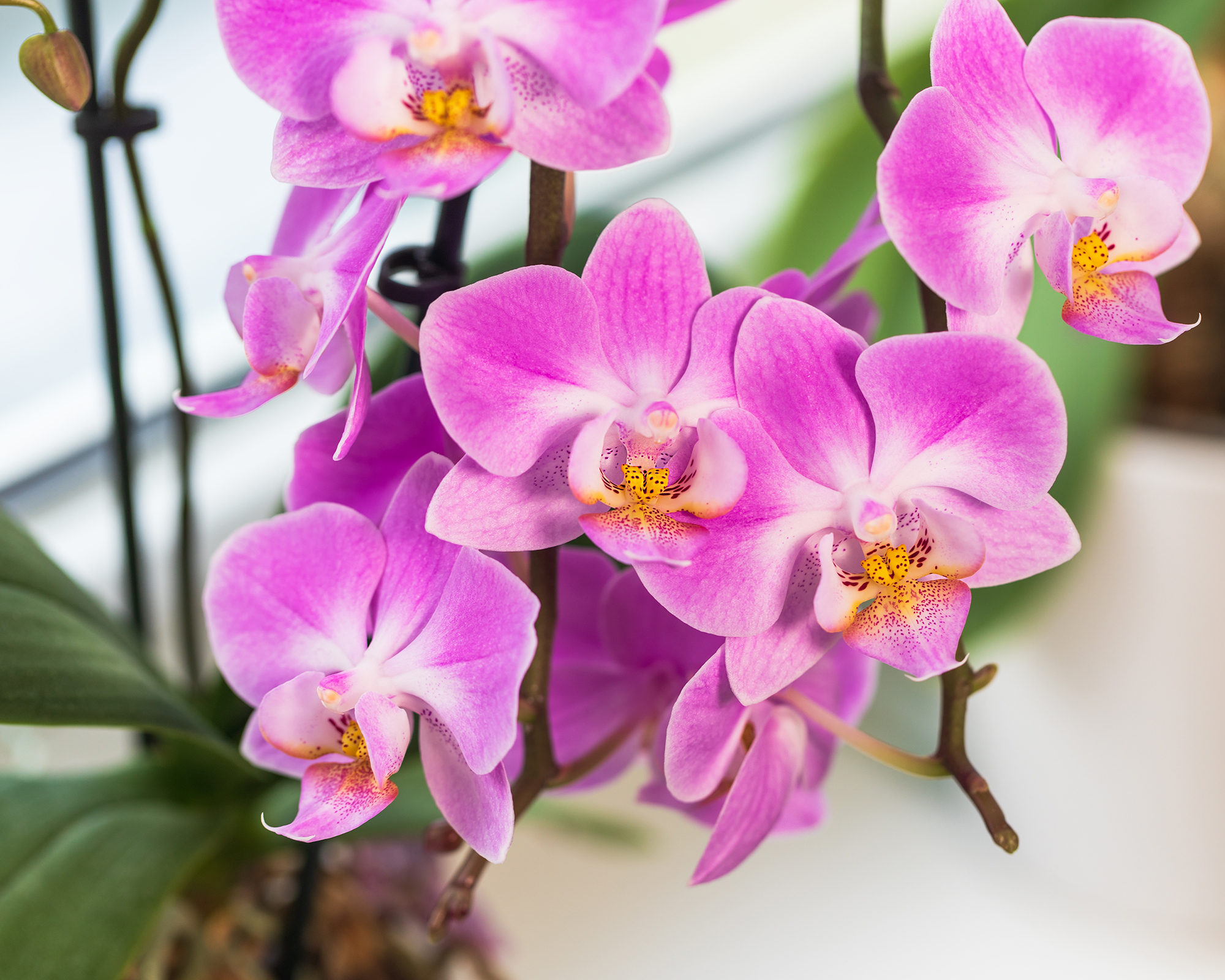
For more of a desert resort feel, air plants (Tillandsia sp.) thrive in brightly lit humid environments. And with no soil required, you’re free to move them around whenever you choose!
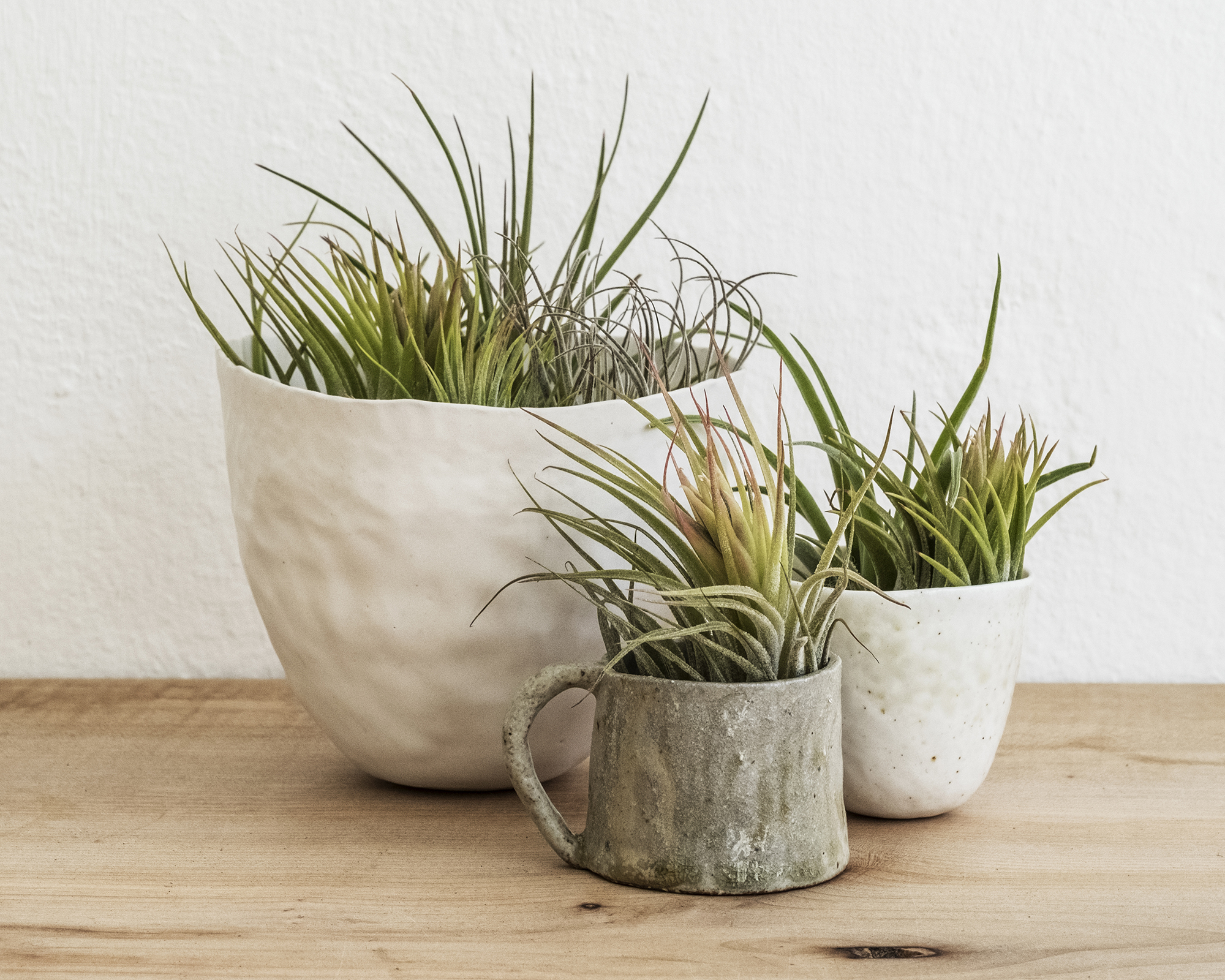
Low-light bathrooms also have several choices for houseplants that will thrive. Lucky bamboo (Dracaena sanderiana) is the go-to choice for lower-light humid conditions. If you’re creating a zen-like décor, this is an excellent option
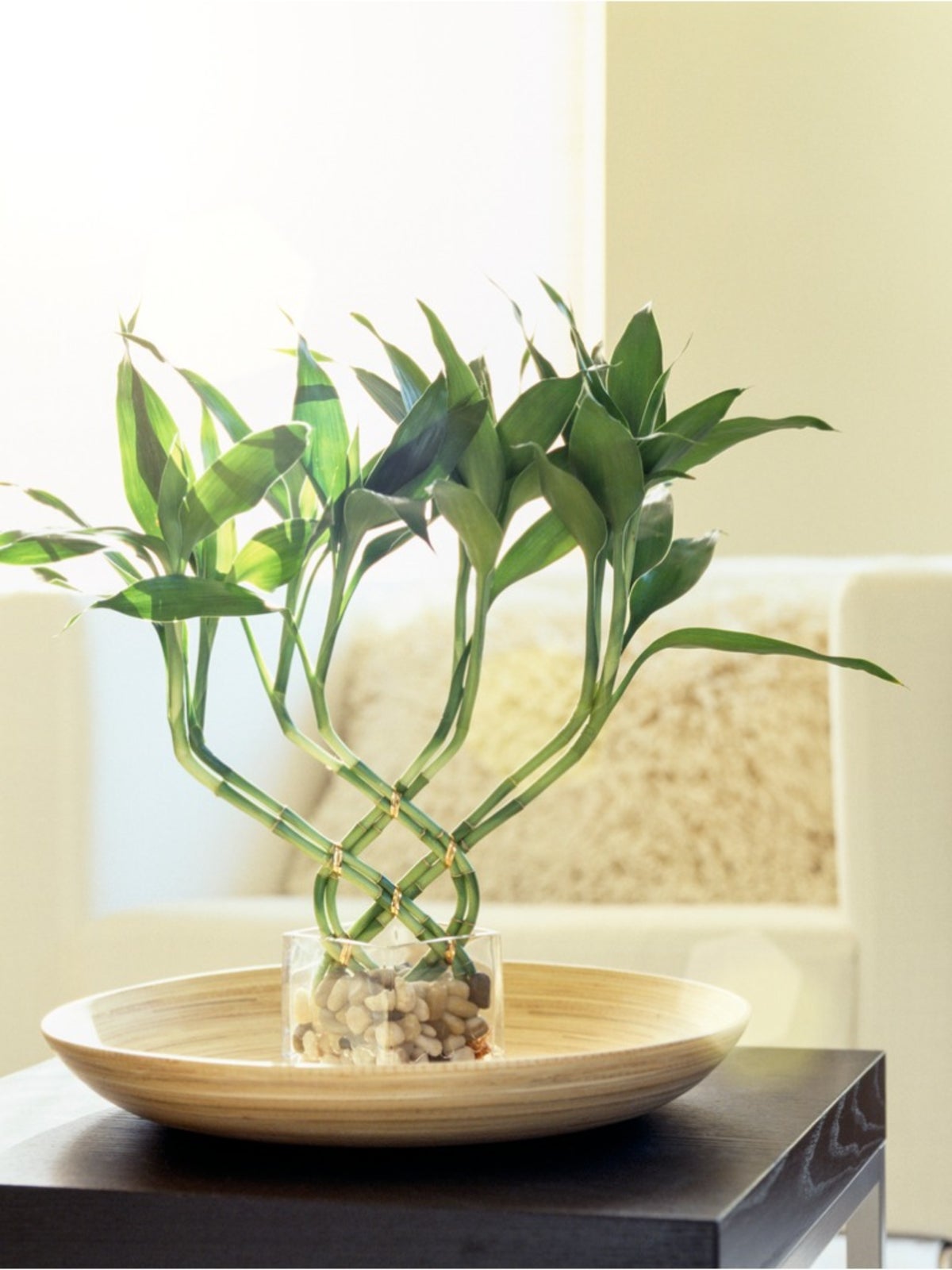
Ferns lend a woodsy character wherever they are placed. The maidenhair fern (Adiantum pedatum) is particularly attractive with its delicate fronds and excels in the bathroom’s humid environment.
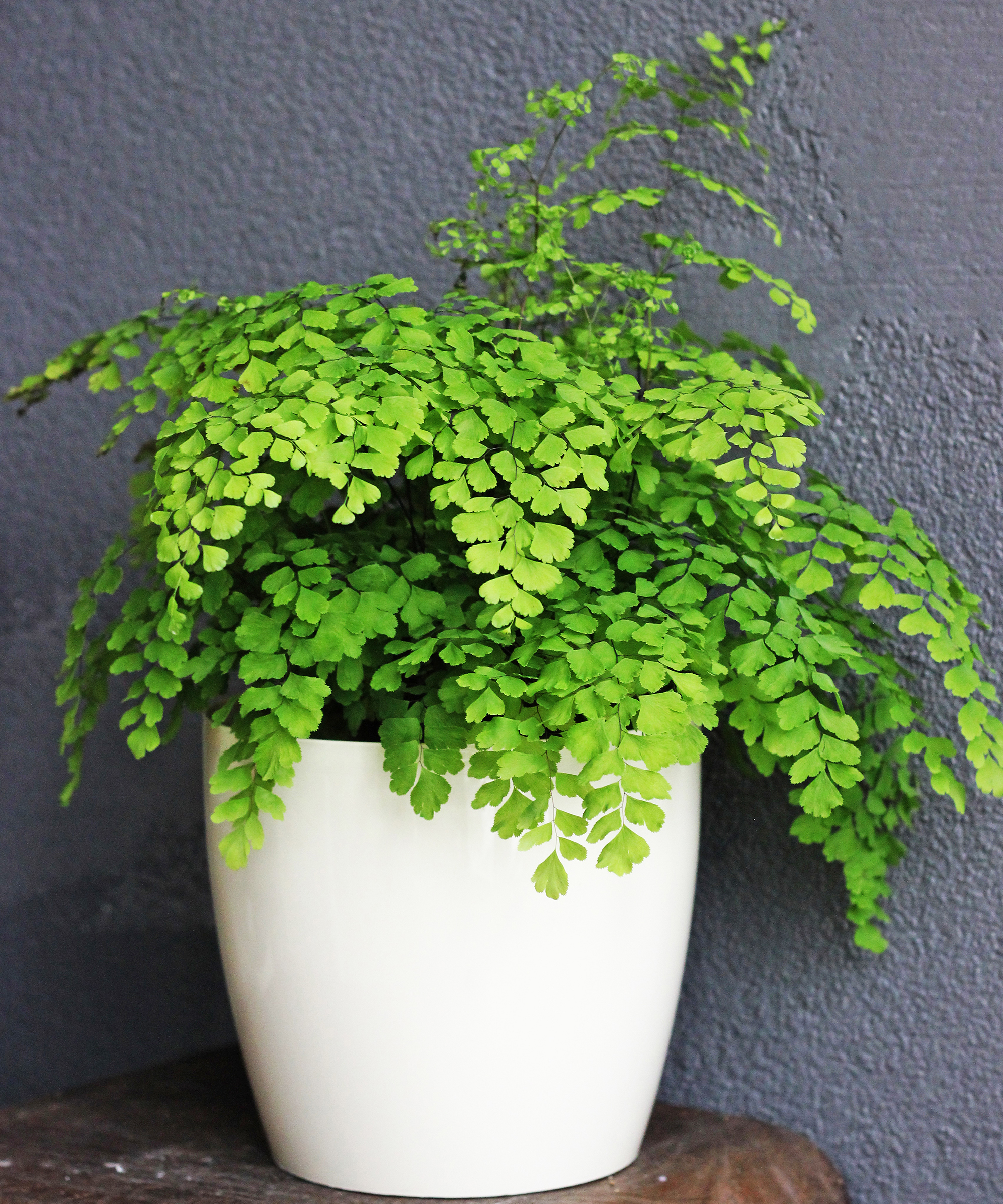
If both light and effort are in short supply in the bathroom, pothos (Epipremnum aureum) is the plant for this space. Place it on a table or countertop with windows nearby, or have it cascading downward from a hanging basket.
The Bedroom
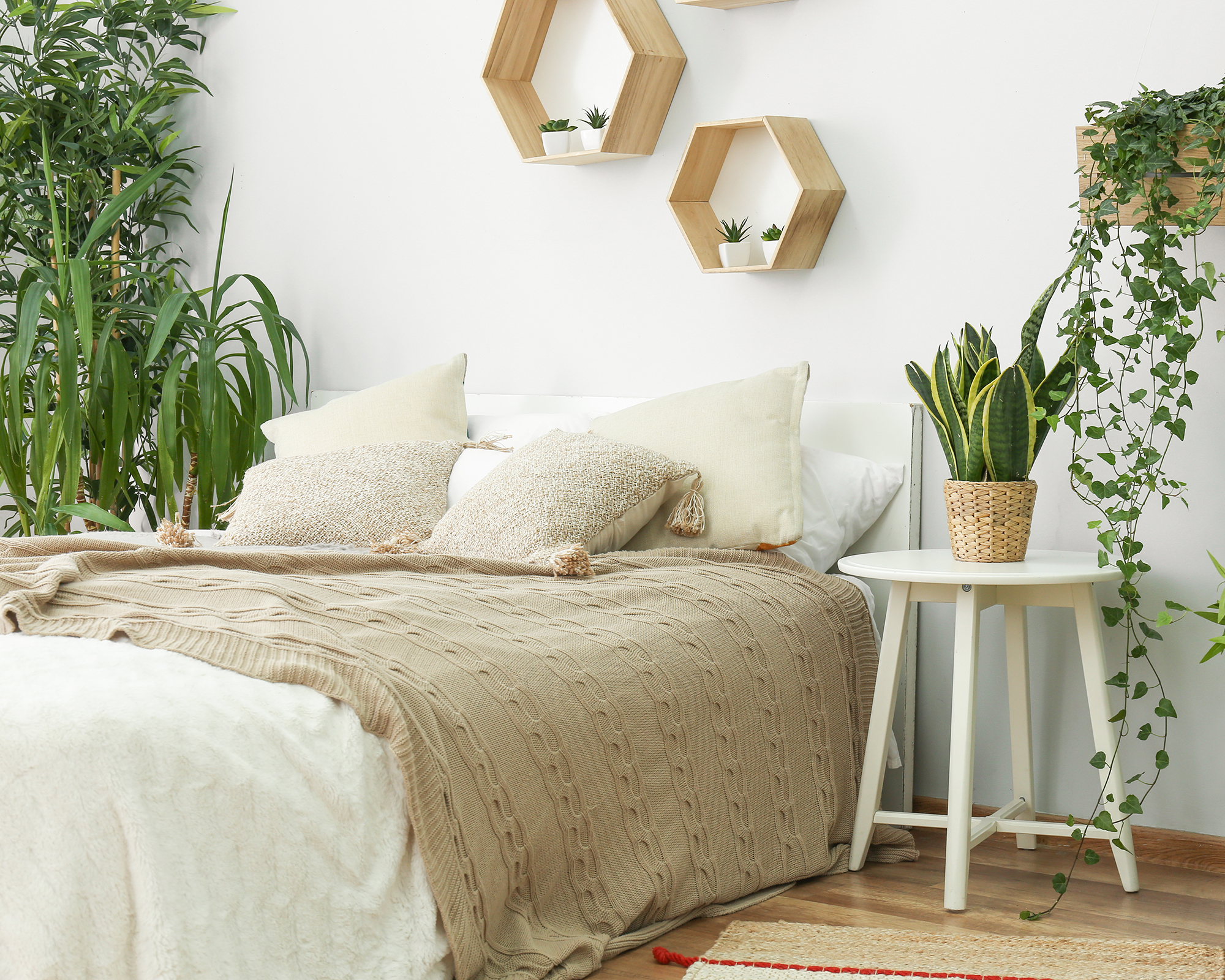
We spend up to a third of our day resting in the bedroom. With sleep playing a vital role in our health and wellness, the bedroom deserves to be a space of refuge. Combining the best houseplants for bedrooms can go a long way in creating a space that is calming to the senses.
Peace lilies (Spathiphyllum wallisii) offer both foliage and flowers in a sizeable tropical plant. Dark green leaves unfurl from below as one white-hooded flower after another blooms. These plants prefer low to moderate light levels and can find a home in nearly any bedroom.
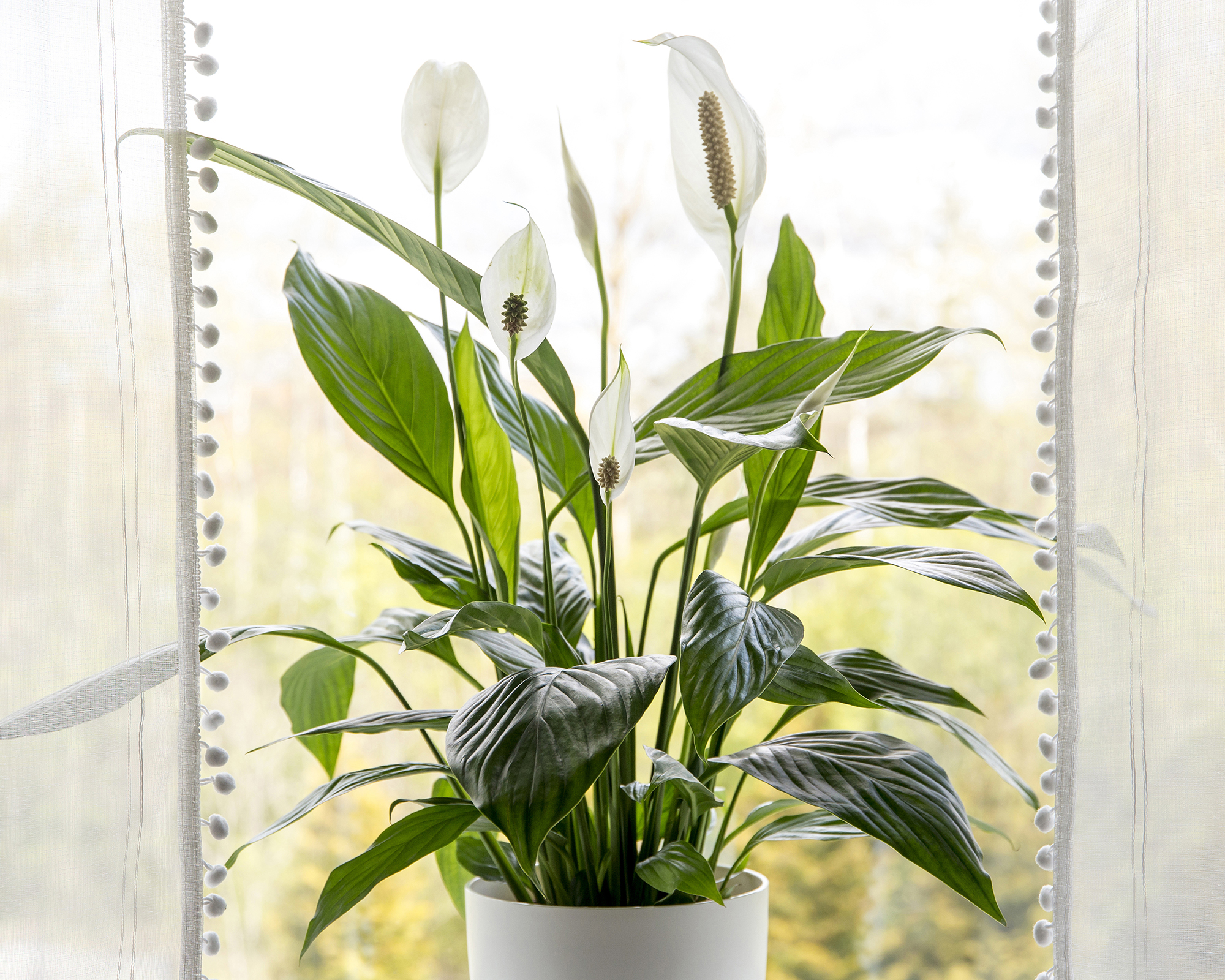
Easy-to-maintain plants are key to creating that zen space. A plant such as the variegated spider plant (Chlorophytum comosum) is so low maintenance it seems to grow on its own in indirect light. Spider plants are best displayed as hanging baskets to let their “spiderettes” float in midair. These are easily grown into full plants for other rooms in your house.
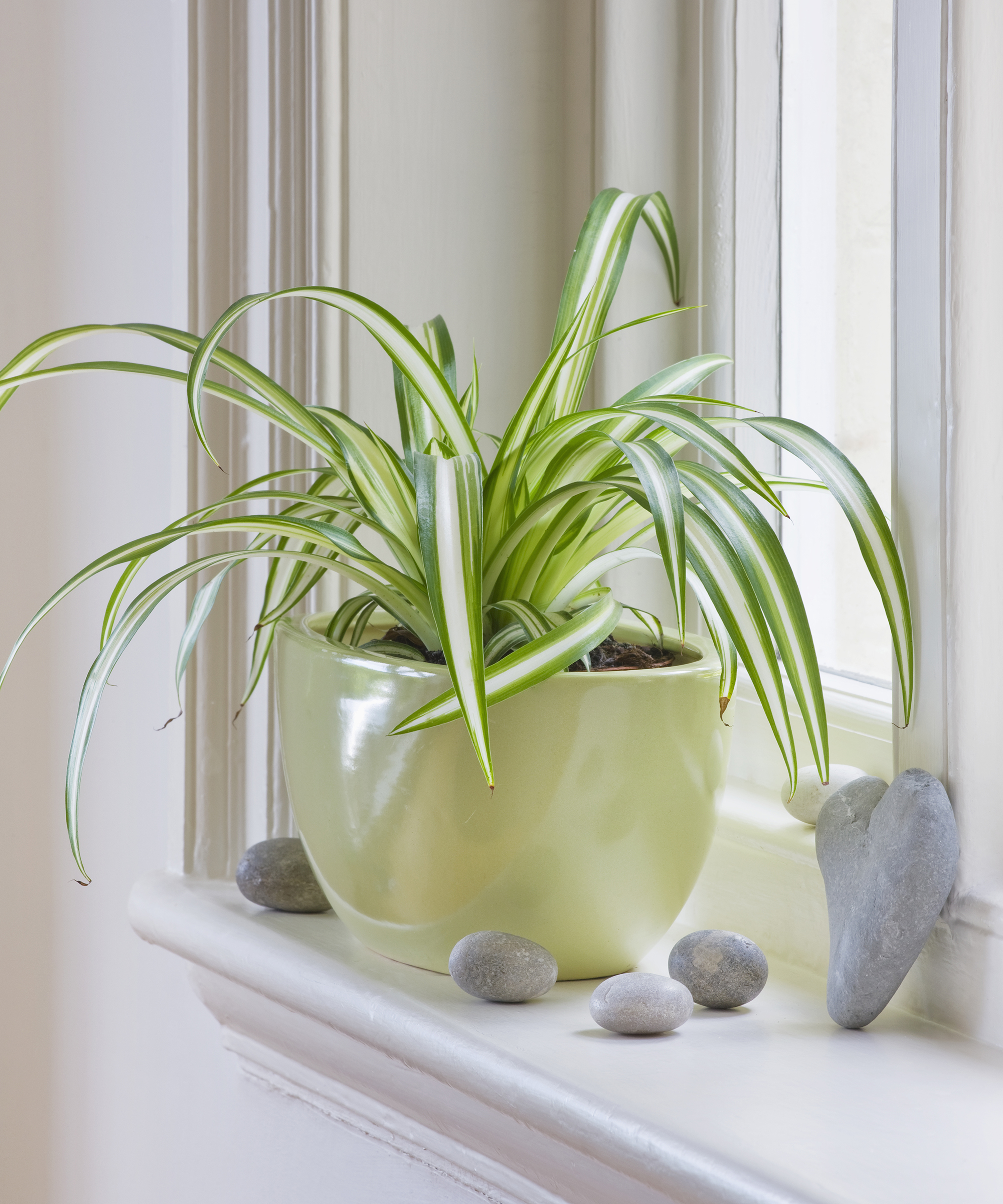
The ZZ plant (Zamioculcas zamiifolia) thrives in low light and is very low maintenance, requiring infrequent water. Known for being virtually indestructible and featuring graceful wands of leaves, it's the perfect plant for a stress-free room.
Other easy-to-grow plants for a stress-free zone include the many varieties of philodendron (Philodendron spp.) and the rubber plant (Ficus elastica). The former creates tangles of solid and variegated vines, while the latter’s glossy solid dark green or pink-and-green variegated leaves lend any space a tropical vibe.
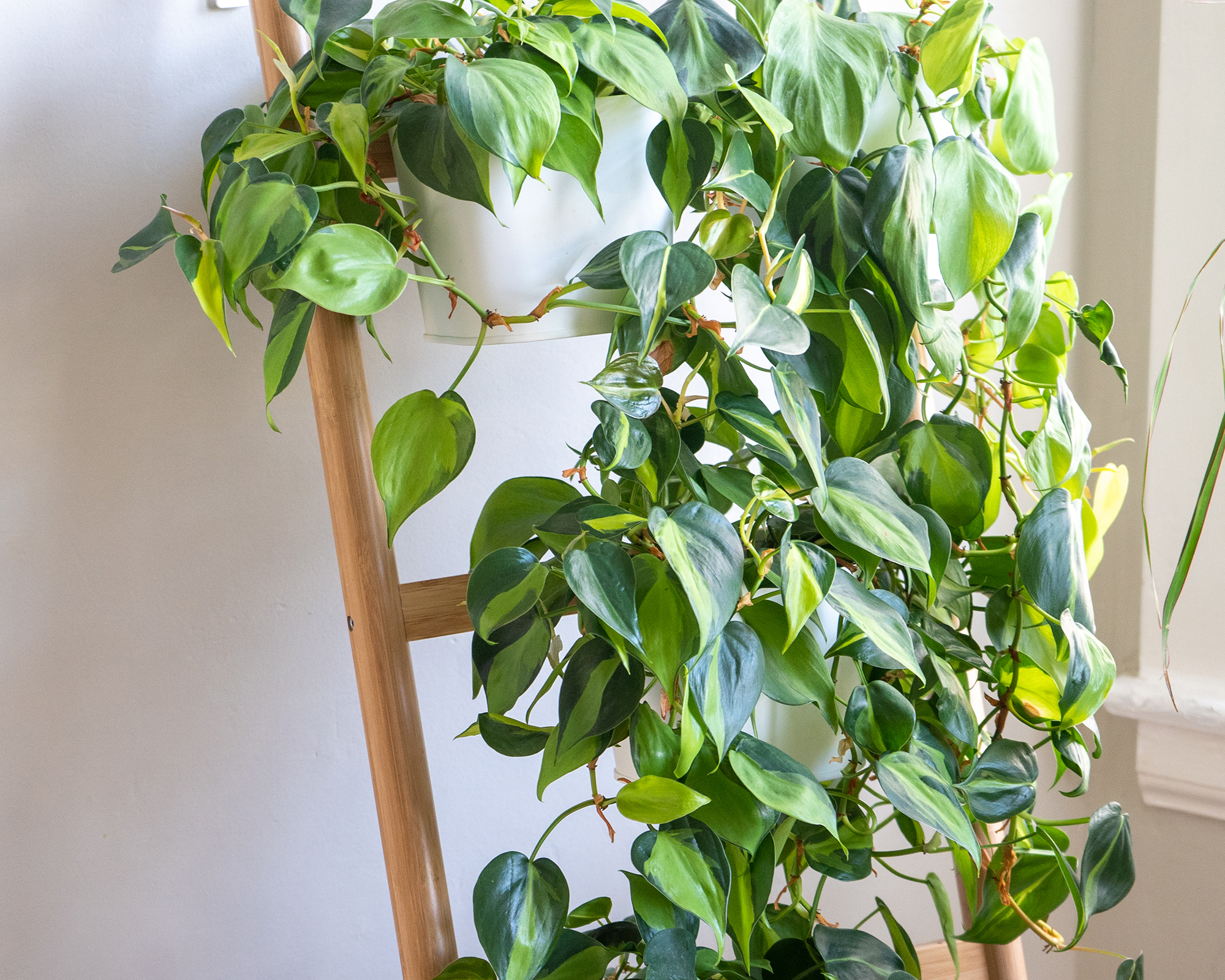
To create the ultimate calm and restful space, place a lavender plant (Lavendula sp.) on your bedside table. The scent of the herb’s leaves and flowers is well known for promoting relaxation and better sleep.
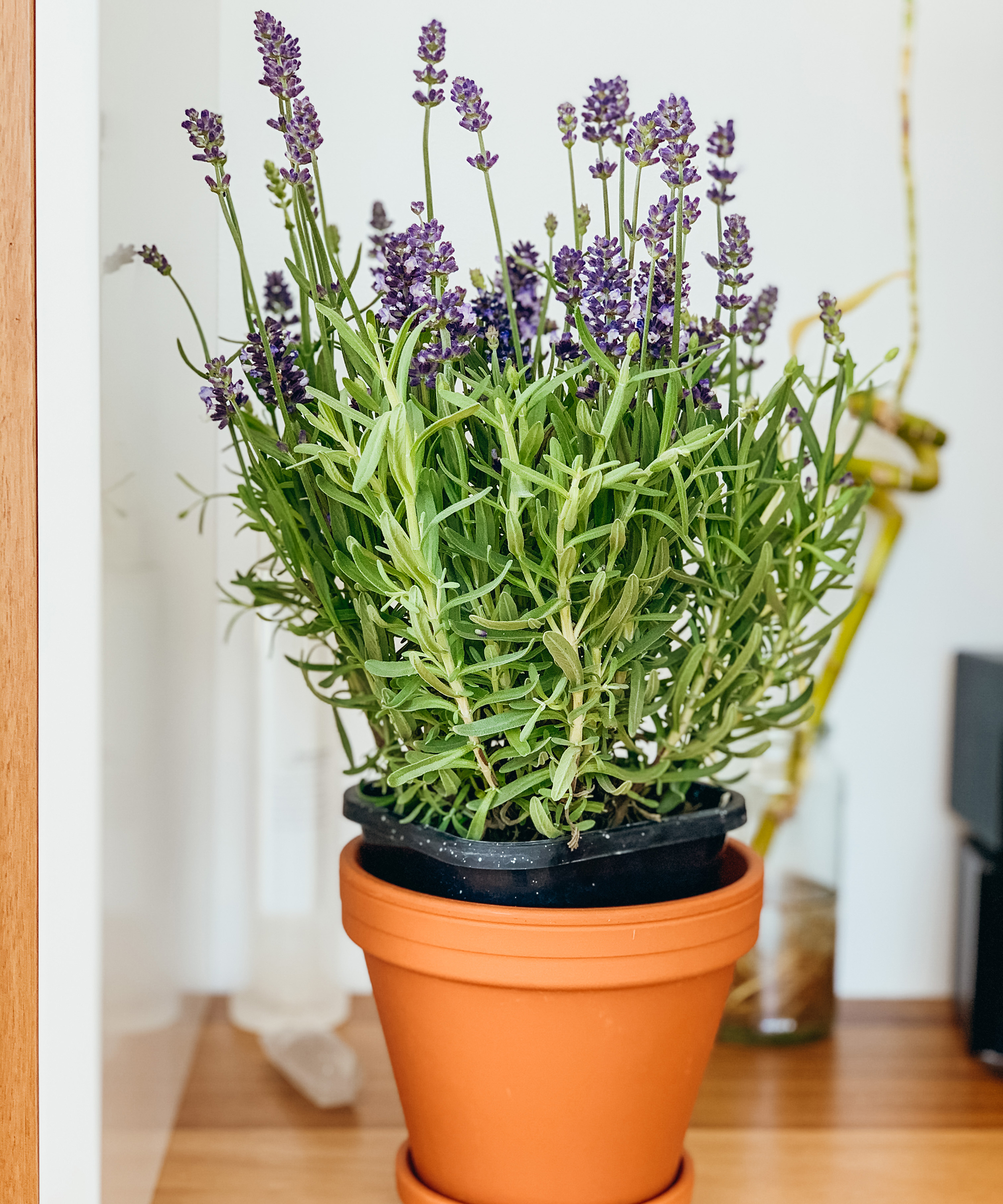
The Family Room
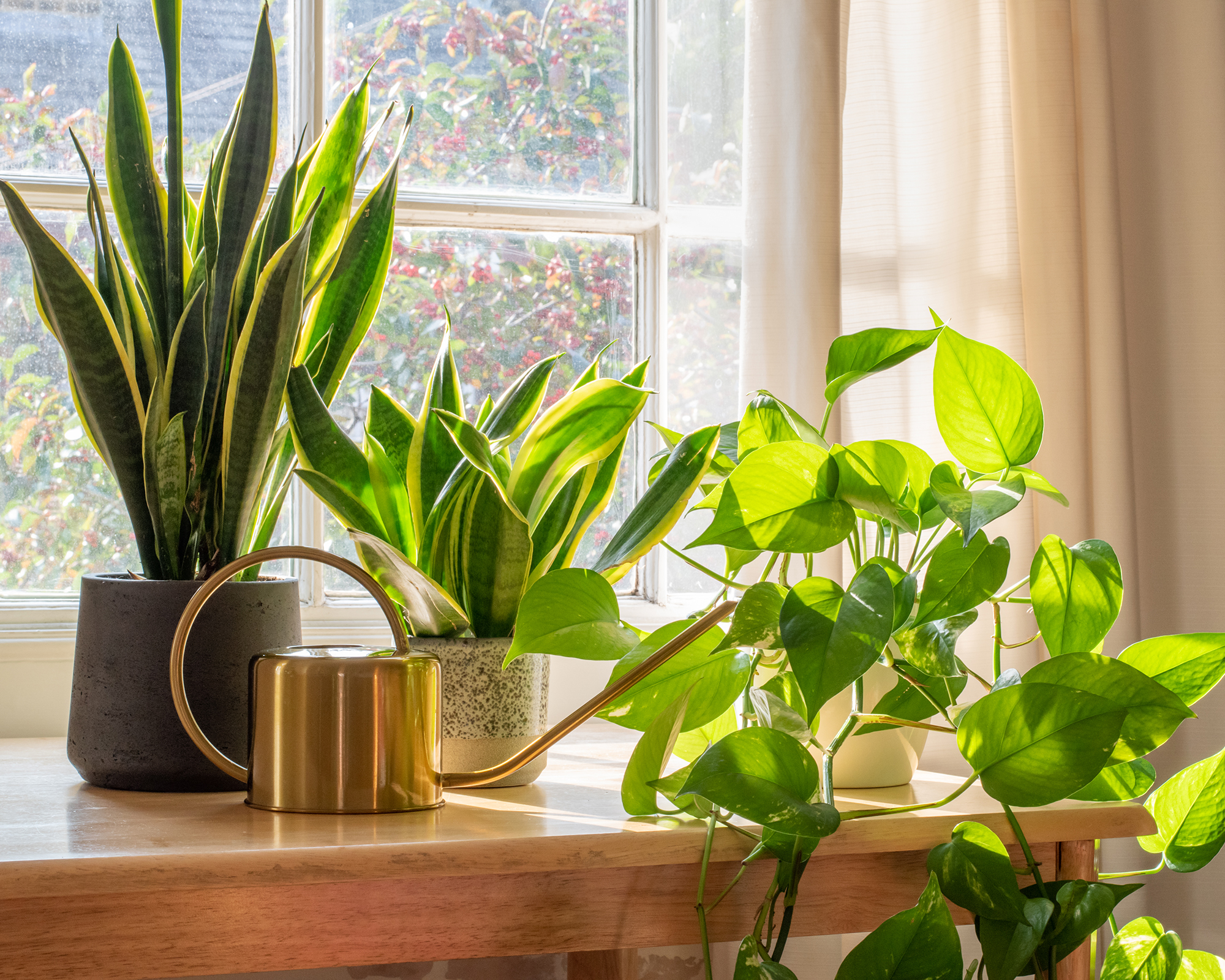
Whether it’s from being on a sub-level or needing the blinds drawn for best monitor viewing, family rooms tend to be low-light spaces. This room, therefore, needs low-light plants. There are plenty of plants for living rooms that can be perfectly combined, and many are old favorites.
Rex begonia (Begonia rex-cultorum) is one of those old favorites. Yet there have been hundreds of different varieties developed over the last few centuries, all featuring bold leaf patterns, fascinating textures, and even metallic-like colorations. Pick your favorite and place it on a side or end table in low to partial sunlight.
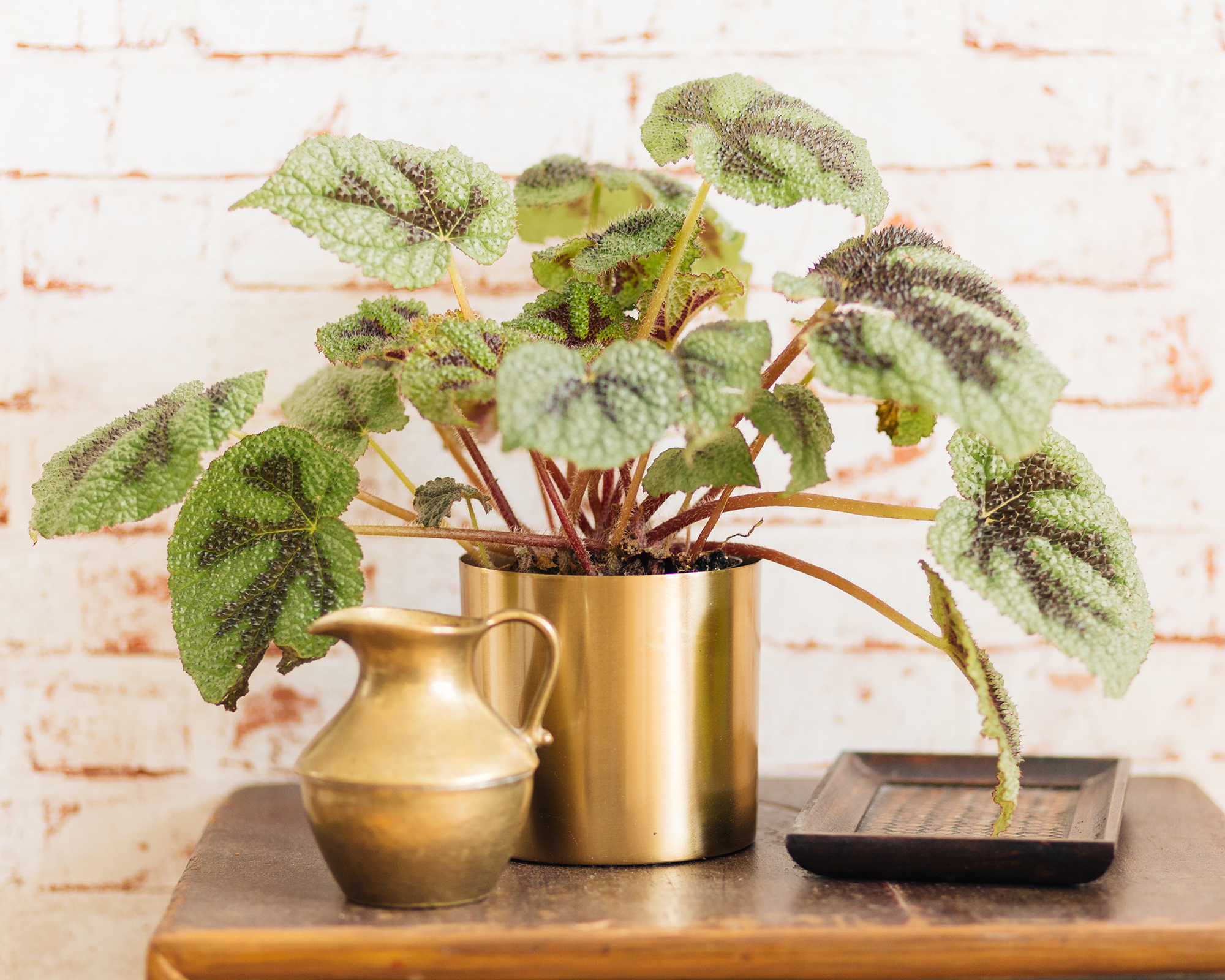
Another old-time favorite is the prayer plant (Maranta sp.). This has elliptical-shaped green leaves with either dark or light patches lining its midrib, depending on the variety. These grow downward, so place this plant on a shelf or entertainment center to best see its leafy designs.
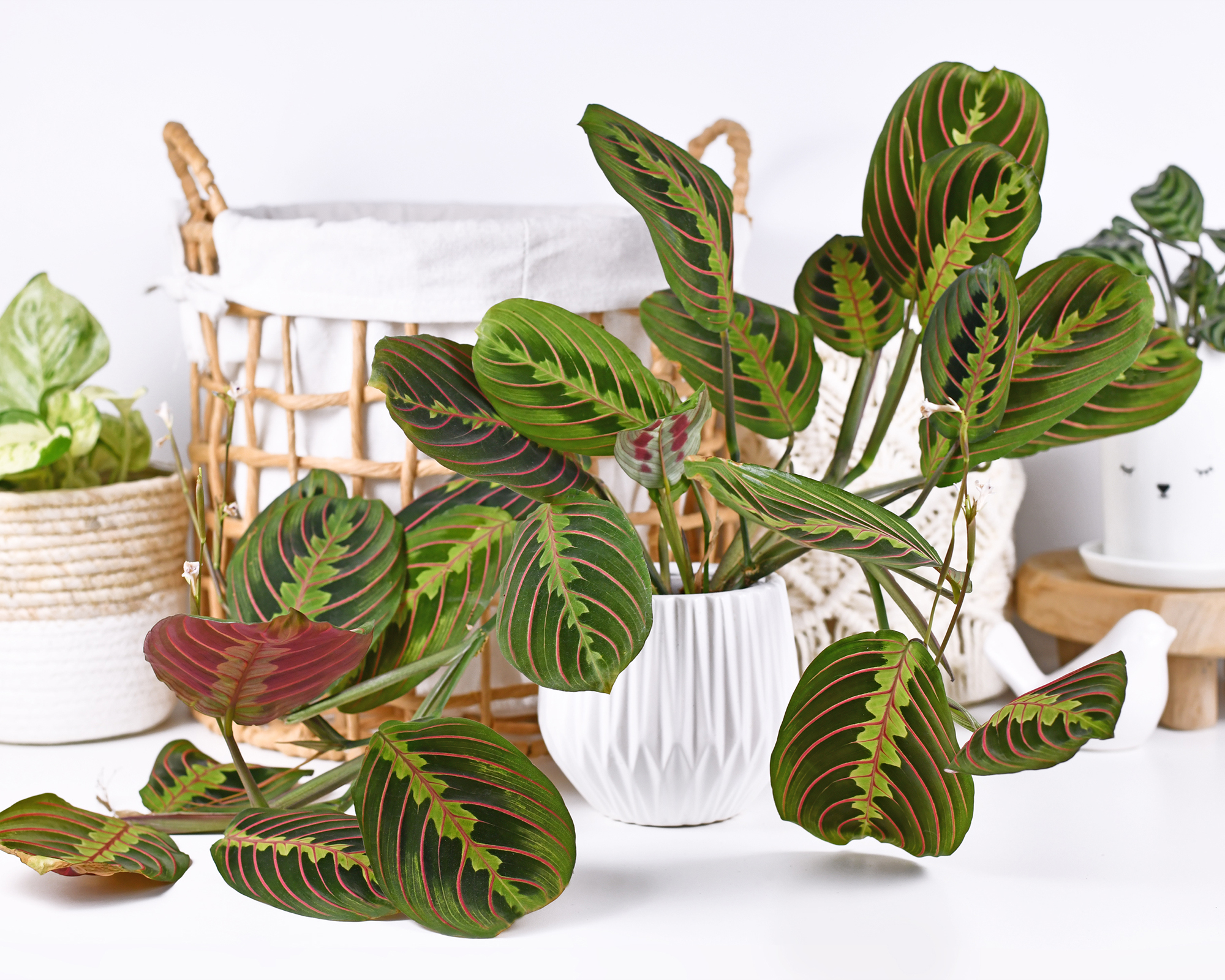
All different types of calathea have stunning and varied leaves that add to the decor in the main living room. Try the rattlesnake variety for its spotty foliage and ease of care, the zebra plant for its lime-hued stripes, and the rose-painted calathea for its pretty pink detailing.
The Chinese evergreen (Aglaonema hybrid) is a relative newcomer to the houseplant world. What’s distinctive about the aglaonema is the variety of leaf patterns and color combinations – some are green and cream, some gray and green, some with red, and some with cream-edged leaves. All will grow with low lighting and can do well with moderate light, too.

For those wanting more of an evenly green item, try the bird’s nest fern (Asplenium antiquum). It has broad, whorly-edged strap-like leaves that emerge from a central rosette. You’ll appreciate not having to vacuum up the small leaflets that frequently drop from traditional ferns.
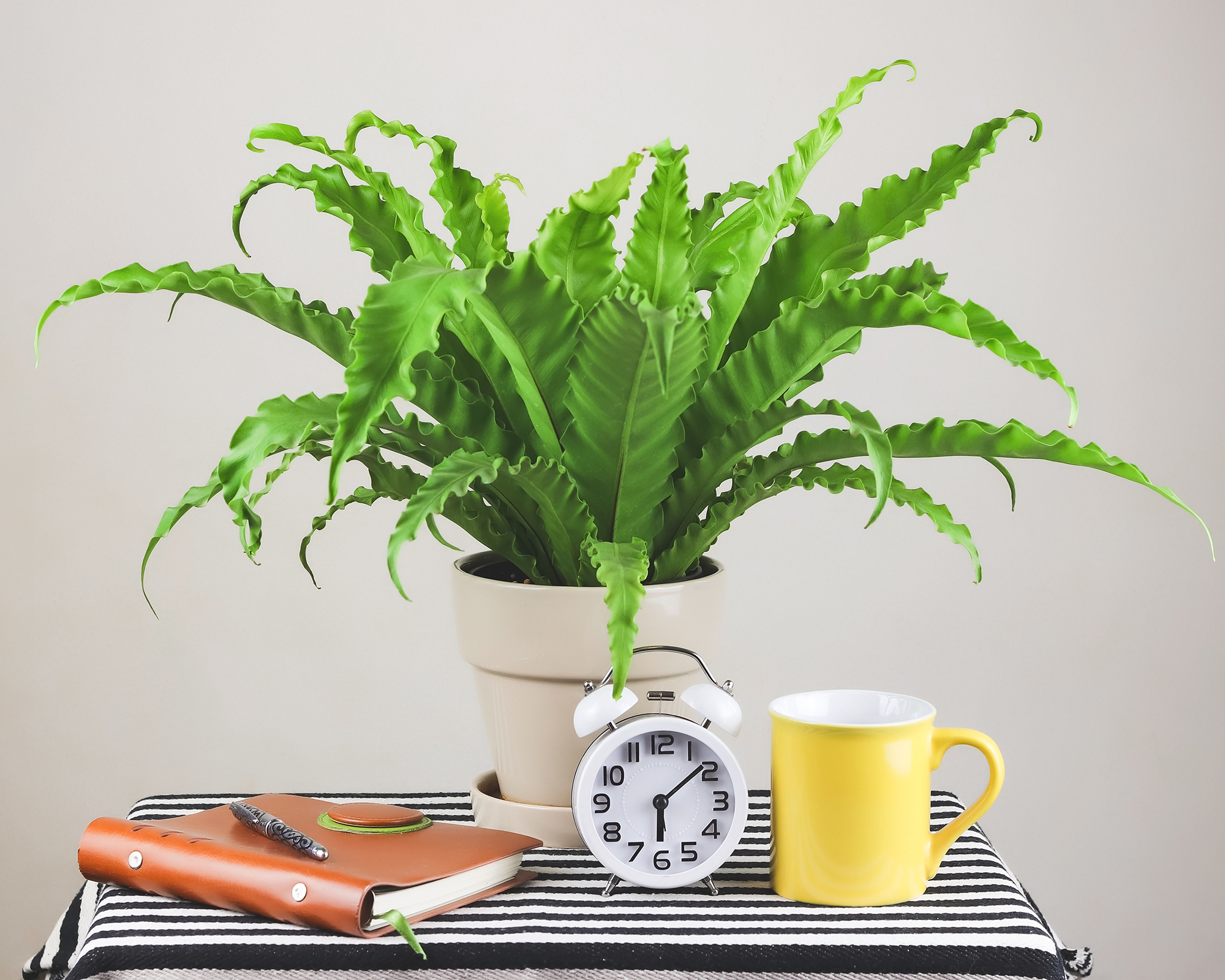
This article features products available from third-party vendors on the Gardening Know How Shop.
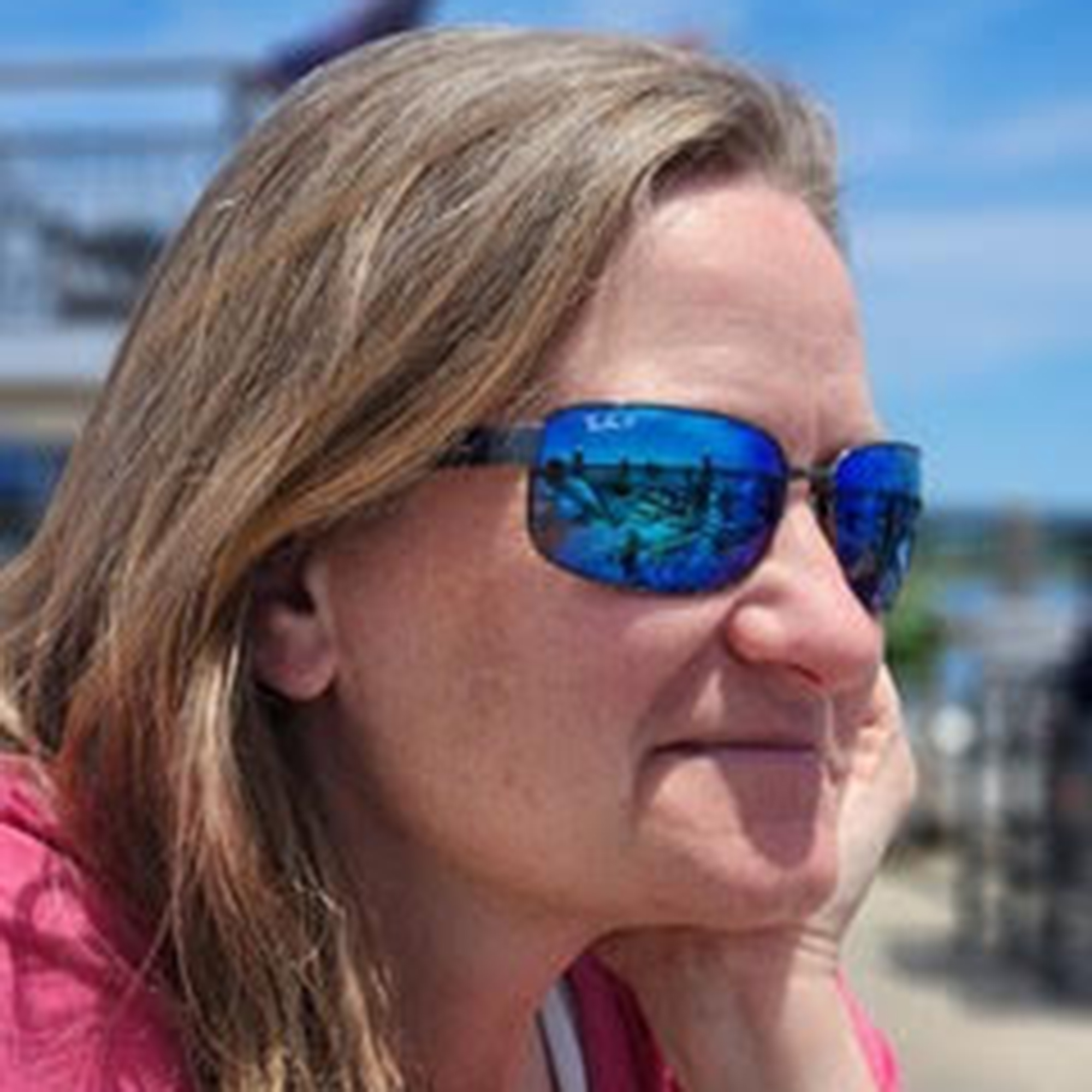
Ellen Wells is a horticultural communications consultant with 30 years of experience writing about all aspects of the gardening world.
She has worked for many of horticulture’s biggest brand names, writing blog posts, articles, press releases, and design and instructional pieces. Her previous roles include Senior Editor and Editor-at-Large for Ball Publishing.
Ellen is based in New England where she gardens in Zone 7a. She loves tending to flower-filled containers on the patio and puttering around her vegetable garden.
